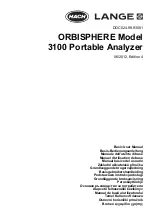
4-16
IM DL350-01EN
• P1-P2
You can specify two measured values (P1:X, P2:X) and specify a scale value (P1:Y, P2:Y) for each. The
scale-conversion equation (y = ax + b) is determined by these four values.
• Measured value (P1:X, P2:X) range: Same as the measurement range
• Scale value (P1:Y, P2:Y) range: −9.9999E+30 to +9.9999E+30
However, you cannot set measured or scaled values P1 and P2 that would make value a in the scaling
equation zero or an incalculable value.
Get Value (Get Value)
Sets P1:X and P2:X to the current values (the values displayed by the level indicator), regardless of
whether waveform acquisition is in progress or stopped.
Measurement range
P1
P2
P1:X
P2:X
P1:Y
P2:Y
y = ax + b
Measured values
Scale values
Unit (Unit)
You can set the unit using up to four alphanumeric characters.
Display Type (Display Type)
When you measure voltage using a voltage module or measure strain using a strain module, you can display the
linearly scaled results using one of the following two methods.
Exponent: Values are displayed in exponential notation.
Floating: Values are displayed as decimal numbers.
For Decimal Number, set the number of digits after the decimal point to Auto or a number from 0 to 3. For
SubUnit, set the unit prefix to Auto, p, n, μ, m, None, k, M, G, or T.
• If you set Decimal Number to a number from 0 to 3, the specified number of digits after the decimal point
are displayed. If you select Auto, all numbers will be displayed using five digits (for example: 1.0000,
250.00).
• If you set SubUnit to a setting other than Auto, numbers will be displayed with the specified unit prefix. If
you select Auto, the instrument will automatically select appropriate unit prefixes. The instrument displays
values in exponential notation if it is unable to display them as decimal numbers.
Scale Value Display
You can display the linearly scaled values of the upper and lower vertical limits of each channel.
You can turn the scale value display on and off in the Display menu.
4 Vertical Axis
















































